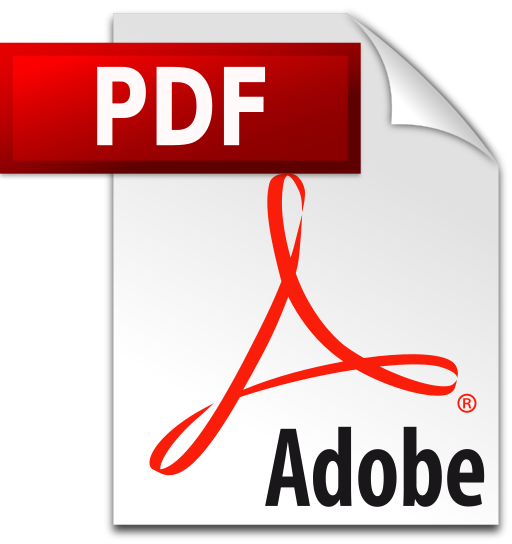NFACC Information Update January 2022
- NFACC welcomes new Associate Member
- National Farmed Animal Health and Welfare Council name change to Animal Health Canada
- Update on Codes of Practice under revision/development
- NFACC in the news
- Upcoming events
NFACC WELCOMES NEW ASSOCIATE MEMBER
NFACC is pleased to welcome new associate member:
Kentucky Fried Chicken (KFC) Canada Company
"Chicken is our business and we have a responsibility as the chicken brand in Canada to make sure we are pushing improvement to chicken welfare standards across our supply chain. Joining the National Farm Animal Care Council is the next step on that important journey. While we don’t own any poultry facilities at KFC, we require all our suppliers and their farmers to follow our industry-leading welfare processes. As Associate Members of NFACC, we will remain committed to raising the minimum level of welfare standards across our own supply chain while also working with multi-stakeholder experts to accelerate progress across our Canadian industry at large."
- Ira Dubinsky, Marketing Director, KFC Canada
NATIONAL FARMED ANIMAL HEALTH AND WELFARE COUNCIL NAME CHANGE TO ANIMAL HEALTH CANADA
The National Farmed Animal Health and Welfare Council has formally changed its name as of January 10, 2022. The new name, Animal Health Canada (AHC), is the first step in realizing a new vision and mission, as well as a new governance structure for the organization. The full press release is available here. More information on AHC is available from their website.
NFACC will continue to function as a semi-autonomous animal welfare division of AHC.
UPDATE ON CODES OF PRACTICE UNDER REVISION/DEVELOPMENT
Farmed Salmonid Code
The final Code of Practice for farmed salmonids (salmon, trout, charr) was published on November 9, 2021. Electronic and hard copies have since been circulated across Canada and beyond.
A report summarizing how input from the public comment period informed the Code Committee’s final deliberations was published alongside the Code. The research needs list can also be viewed online. Jointly developed by the Code and Scientific Committees, this list is intended to help direct research dollars towards these priority research topics so that the gaps in knowledge can hopefully be addressed before this Code is updated.
Congratulations to the industry and all those with an interest in fish welfare on this milestone! The farmed salmonids Code is the 13th to be developed under NFACC’s process and breaks new ground (or rather waters!) for NFACC as the first Code for farmed fish.
Dairy Cattle Code
The comment period started on November 29 and, so far, about 951 individuals and organizations have participated. Having worked very hard to draft the updated Code and promote the comment period, the Code Committee hopes to see an effort from all stakeholders to provide input. The online platform is user-friendly, and participants can comment on all chapters of the Code or easily navigate to chapters that are most of interest.
While the 60-day comment period ends on January 27, NFACC has given an extension (until February 15) for those in BC directly affected by the recent flood, in the flood region, and that could otherwise not participate. We respect that life is still far from normal for BC dairy farmers, and possibly some veterinarians, directly affected by this disaster. We hope this extension helps them to be able to provide input.
A series of meetings have already been scheduled in March through June so the Code Committee can begin reviewing and discussing the feedback.
Previous progress reports are available here.
Goat Code
Work on the goat Code of practice continues along two fronts; discussing and addressing all public comment contributions and finalizing all content related to requisite Code topics. Virtual Code Development Committee [CDC] meetings, which had been temporarily deferred in favour of smaller-scale reviews/discussions among sub-committee Leads and individual Code committee members, are underway on all fronts.
To date, four of the eight Code sections (including On-farm Euthanasia, Pre-Transport, and Emergency Planning & Management) have now been consensually agreed upon by their respective sub-committees for presentation and final review – as well as any remaining deliberations if/as needed – by all members of the CDC. Each prepared section will be reviewed by all members of the CDC prior to meeting virtually. Three of the remaining sections (Feed & Water, Health, and Animal Husbandry) have been reviewed and deliberated (through virtual sub-committee meetings) and are in the process of being finalized for presentation to the entire CDC. The remaining Code sub-committee (addressing ‘Housing and Accommodations’) is to fully reconvene shortly (as this section received the majority of public comments).
Moving forward, the entire CDC will reconvene to hear and respond to brief presentations from each sub-committee Lead regarding any recommended edits, insertions, or amendments -- and the basis for such. Only issues for which consensus cannot be immediately attained will be discussed further prior to the close of the Code deliberation process (and subsequent submission to NFACC). All CDC meetings and content reviews are on track to conclude by the end of March, 2022.
Previous progress reports are available here.
Transportation Code
Three of the four sub-committees of the Transportation Code Development Committee (CDC) have completed their work in populating common content for their assigned topics, with the fourth sub-committee nearing completion and in the process of determining whether a final 13th meeting is needed to finalize content for some of the topics. Over the course of the late fall/early winter, the sub-committee developed common content that covers basic principles on loading densities. With the work of the other sub-committees (Loading & Unloading; Fitness; Personnel & Planning) complete, the Code management team is tasked with combining common content for review by the CDC. As in-person meetings are not a viable option for the foreseeable future, the plan is to re-engage the CDC via virtual meetings that will occur on a regularly scheduled basis, and that will be treated as one continuous meeting.
The CDC is expected to commence reviewing the work of its sub-committees during the first quarter of 2022. When the CDC review is close to completion, the next step will be to reactivate the species-specific WGs (Cattle; Pigs; Equine; Sheep & Goat; Bison & Cervid) so that those groups can supplement all common content with animal-specific content. The Poultry WG and the Mink/Fox/Rabbit WGs will also review common content to determine whether it appropriately aligns with their unique sectors, or whether supplemental text is necessary.
The Intermediary Sites WG has had 15 virtual meetings since January 2021. The WG is composed of three diverse sectors (assembly facilities; sales yards/auctions; feed/water/rest stations) and covers a wide variety of species. To date, the group has developed a rough draft for most topics for their section and continues to work diligently through the remaining issues.
Previous progress reports are available here.
For information on the steps of the Code development process and progress of the Codes being updated follow this link.
Funded in part by the Government of Canada under the Canadian Agricultural Partnership’s AgriAssurance Program, a federal, provincial, territorial initiative.

